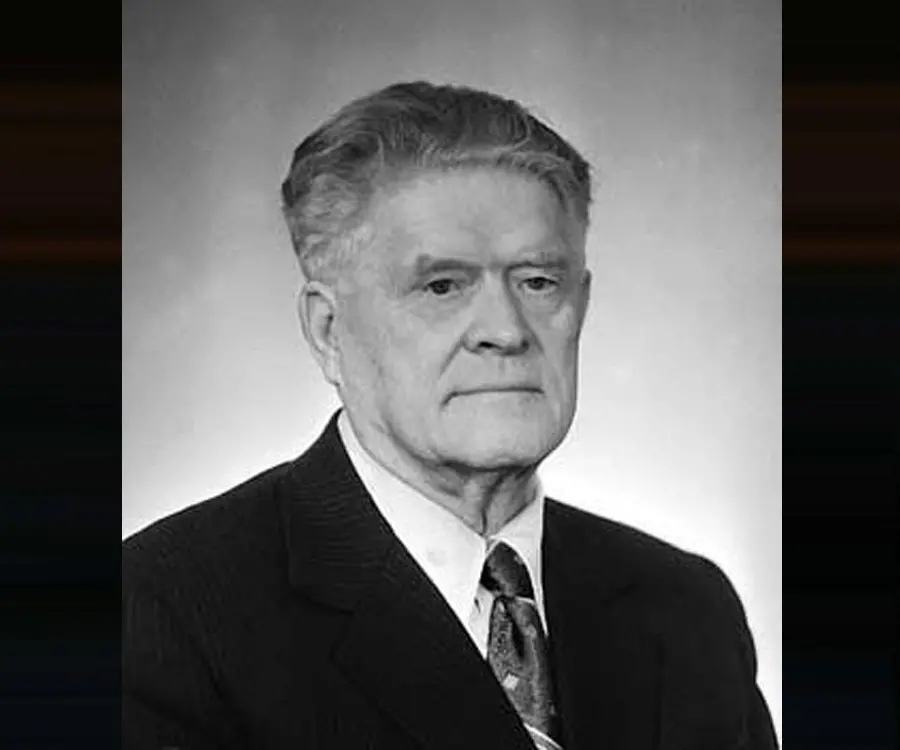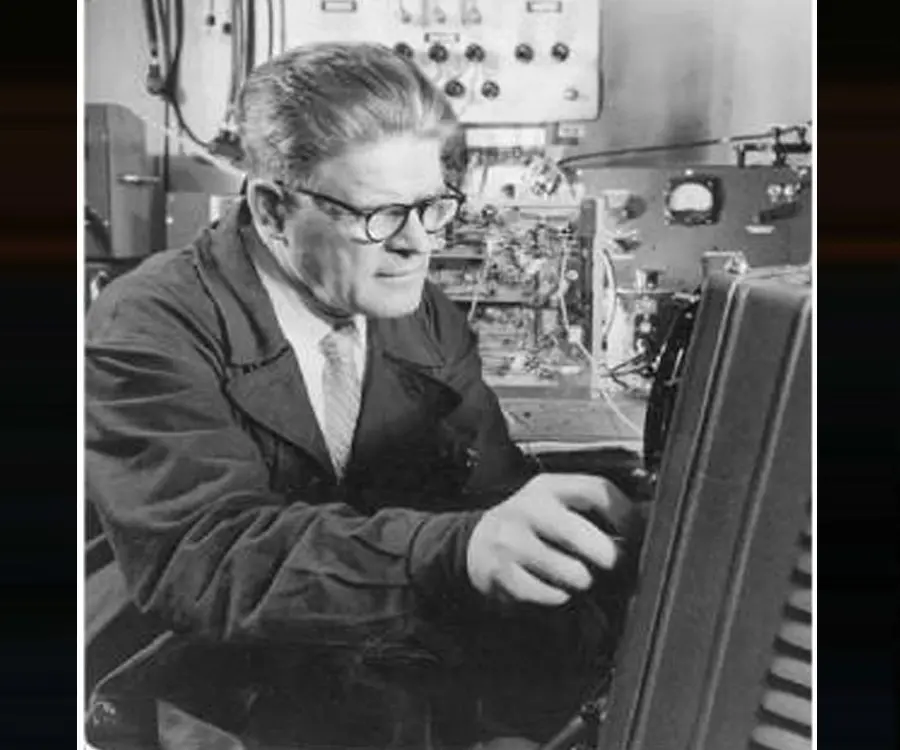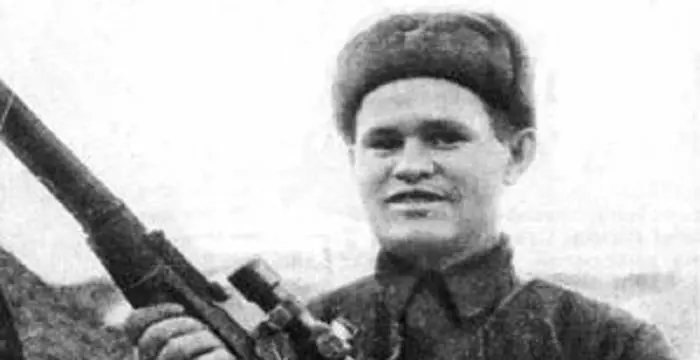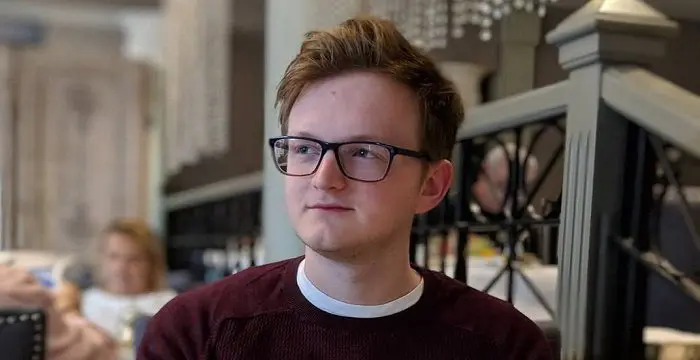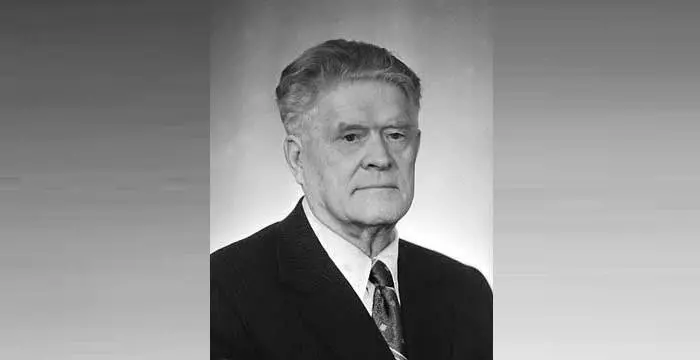
Pavel Cherenkov - Scientists, Life Achievements and Facts
Pavel Cherenkov's Personal Details
Pavel Alekseyevich Cherenkov was a Soviet physicist who was awarded the ‘Nobel Prize in Physics’ in 1958
| Information | Detail |
|---|---|
| Birthday | July 28, 1904 |
| Died on | January 6, 1990 |
| Nationality | Russian |
| Famous | Scientists, Physicists |
| Spouses | Maria Putintseva |
| Known as | Pavel Alekseyevich Cherenkov |
| Childrens | Alexey, Yelena |
| Universities |
|
| Birth Place | Voronezh Oblast, Russian Empire |
| Gender | Male |
| Father | Alexey Cherenkov |
| Mother | Mariya Cherenkova |
| Sun Sign | Leo |
| Born in | Voronezh Oblast, Russian Empire |
| Famous as | Physicist |
| Died at Age | 85 |
// Famous Scientists
Juliane Koepcke
Juliane Koepcke is a German-Peruvian biologist, who was the lone survivor among the 92 passengers and crew of the ill-fated LANSA Flight 508 that crashed in the Peruvian rainforest on 24 December 1971. Know more about her life in this biography.
Henry Cavendish
Henry Cavendish was a theoretical chemist and physicist, renowned for discovery of hydrogen and calculation of the mass of earth. To know more about his childhood, profile, timeline and career read on
Konstantin Tsiolkovsky
Konstantin Tsiolkovsky was a Russian rocket scientist and a pioneer of astronautics. This biography provides detailed information about his childhood, family, personal life, career, achievements, etc.
Pavel Cherenkov's photo
Who is Pavel Cherenkov?
Pavel Alekseyevich Cherenkov was a Soviet physicist who was jointly awarded the ‘Nobel Prize in Physics’ in 1958 with two other Soviet scientists Igor Tamm and Ilya Frank for discovering and hypothetically construing the Cherenkov radiation phenomenon. Also called the Vavilov–Cherenkov radiation, it is a unique form of electromagnetic radiation observed by Cherenkov while working in the ‘Lebedev Physical Institute’ under supervision and collaboration of eminent Soviet physicist Sergei Ivanovich Vavilov. Cherenkov discovered that when charged particles like electrons travel with high velocity, faster than light, through a particular medium, a slight bluish light is emitted. This discovery led to subsequent development of the Cherenkov counter, also known as Cherenkov detector – a particle detector that uses the speed threshold for producing light. Eventually Cherenkov counter gained significance after Second World War when physicists began applying it extensively in their investigative endeavours in the field of particle and nuclear physics. Cherenkov conducted his research work in cosmic-ray and nuclear physics at the ‘Lebedev Physical Institute’ in Moscow, Russia. He received two Stalin Prizes, one in 1946 jointly with Tamm, Frank and Vavilov, and the other in 1952. In 1977 he received ‘USSR State Prize’ and in 1984 the title of ‘Hero of Socialist Labour’.
// Famous Physicists
Henry Cavendish
Henry Cavendish was a theoretical chemist and physicist, renowned for discovery of hydrogen and calculation of the mass of earth. To know more about his childhood, profile, timeline and career read on
Walter Kohn
Nobel Laureate Walter Kohn was an Austrian-born American theoretical chemist and physicist. Check out this biography to know about his childhood, life, achievements, works & timeline.
Nikola Tesla
Nikola Tesla was a Serbian-American inventor, best known for his development of alternating current electrical systems. This biography of Nikola Tesla provides detailed information about his childhood, life, achievements, works & timeline.
Childhood & Early Life
He was born on July 28, 1904, in the village of Novaya Chigla in southern Russia, to Alexey Cherenkov and Mariya Cherenkova. His parents were peasants.
He lost his mother at around two years of age following which his father remarried. He was raised in poverty along with eight siblings and the impoverished condition of the family led him to take up a manual labour job at thirteen years of age with only two years of elementary education.
Following the Bolshevik Revolution (November 7-8, 1917) and the subsequent civil war, his village got a new Soviet secondary school in 1920, which gave him the opportunity to restart his studies. Side-by-side he occasionally worked at a grocery store to earn a living.
The radical reforms undertaken by the Bolshevik government with regard to the educational system, especially the opportunities made available for the downtrodden students, allowed him to enrol at the ‘Voronezh State University’ without finishing secondary education. He studied in the Department of Physics and Mathematics at the university and completed his graduation in 1928.
Thereafter he started teaching mathematics and physics in an evening school for labourers in the small town of Kozlov (presently Michurinsk) in the Tambov province.
Career
In 1930 he was inducted as a senior researcher in ‘Lebedev Physical Institute’ (commonly abbreviated as ‘FIAN’), of the ‘Russian Academy of Sciences’, Moscow, one of the oldest research institutes in Russia.
There he was assigned by S.I. Vavilov to examine the result of exciting luminescent solutions of uranium salts, not by ordinary light as commonly applied, but by more energetic gamma rays from a radioactive point of supply.
Cherenkov observed a new phenomenon, which differed from that of luminescence, that a faint blue light is produced by gamma rays in generally non-luminescent pure solvents like water and sulphuric acid. His observation in 1934 of the unique form of electromagnetic radiation where he discovered that blue light is being emitted when charged particles like electrons travel with high velocity, faster than light, through a particular medium, proved to be of immense significance for further researches in the fields of cosmic rays and nuclear physics.
Eventually further characteristics of this new form of electromagnetic radiation were unearthed by him that included its particular anisotropy. This aided other theoreticians of ‘FIAN’ namely Ilya Mikhailovich Frank and Igor Yevgenyevich Tamm to elucidate in 1937 the real cause of such phenomenon, which was epithet as the ‘Cherenkov effect’ or ‘Cherenkov radiation’ also called the ‘Vavilov–Cherenkov radiation’.
Not only electrons but any electrically charged particles can generate the effect provided they transmit through a medium with high velocity.
In 1934 he took part in the Elbrus expedition of ‘FIAN’ which set up the Soviet’s first ever high-altitude cosmic ray station on the Caucasus Mountains. The new phenomenon of cosmic ray showers in the atmosphere was examined by him. His further studies in cosmic rays saw him constructing the Wilson chamber detectors during the 1940s for the cosmic rays expedition and station on the Pamir Mountains.
In 1940 he earned the degree of Doctor of Physico-Mathematical Sciences.
In 1944 he became a member of the ‘Communist Party of the Soviet Union’ and remained dedicated to the party throughout his life.
In course of time the Cherenkov counter or the Cherenkov detector was designed. It is a particle detector that has become a classic device in the field of particle and nuclear physics for observing the presence and velocity of particles that can move in high speed. The detector was installed in the Soviet research satellite ‘Sputnik 3’ on May 15, 1958.
During 1946 to 1958 he was involved in assisting Vladimir Iosifovich Veksler to design new forms of particle accelerators like the synchrotron – a gigantic machine around the size of a soccer ground that is used in electron acceleration nearly matching up to the speed of light, in 1947; and Soviet’s first betatron – a device to accelerate electrons through magnetic induction in a circular path, in 1948.
He was among the prime contributors of the even larger 250 MeV synchrotron of the ‘FIAN’ that began to operate in 1951 and for which he and Veksler were awarded the ‘Stalin Prize’ that year.
From 1951 to 1977 he remained associated with the ‘Moscow Institute of Physical Engineers’ (MIFI) as a professor.
Cherenkov became Professor of Experimental Physics in ‘FIAN’ in 1953.
From 1959 he led the photo-meson processes laboratory of ‘FIAN’ that investigated on the way photons interact with nucleons and mesons. Such investigations garnered recognition and fetched him the ‘USSR State Prize’ in 1977.
He was elected as a corresponding member of the prestigious ‘USSR Academy of Sciences’ in 1964 and thereafter a full member or Academician in1970.
During the 1970s he aided in designing and organising a new acceleration lab in Troitsk, near Moscow, that consisted of a 1.2 Gev synchrotron.
He was elected as a foreign member of the US ‘National Academy of Sciences’ in 1985.
He represented the Soviet Union globally in platforms like the Pugwash Conferences on Science and World Affairs, the Soviet Organization for Security and Co-operation in Europe Committee and the Soviet Peace Committee.
He continued with his research work in ‘FIAN’ approximately till his death.
Awards & Achievements
He received the ‘Nobel Prize in Physics’ in 1958 jointly with Igor Tamm and Ilya Frank for discovery of the Cherenkov radiation phenomenon.
Personal Life & Legacy
He married Maria Putintseva in 1930. She was the daughter of A.M. Putintsev, a Professor of Russian Literature.
The couple was blessed with a son Alexey and a daughter Yelena, both of whom became scientists.
On January 6, 1990, he passed away at the age of 85 years in Moscow and was buried in the cemetery of the city, the ‘Novodevichy Cemetery’.
// Famous Russian peoples
Vasily Zaytsev
Vasily Zatysev was a Russian sniper who served during the World War II. Check out this biography to know about his childhood, family life, achievements and fun facts about him.
Zyzz (Aziz Shavershian)
Zyzz (Aziz Shavershian) was a popular Australian Body Builder and internet personality. Check out this biography to know about his childhood, family life, achievements and other facts about his life.
Kristina Pimenova
Read this bio to gather several facts, trivia and many details related to the personal and family life of Kristina Pimenova.
Pavel Cherenkov's awards
| Year | Name | Award |
|---|---|---|
Other | ||
| 0 | Nobel Prize in Physics (1958) | |
Pavel Cherenkov biography timelines
- // 28th Jul 1904He was born on July 28, 1904, in the village of Novaya Chigla in southern Russia, to Alexey Cherenkov and Mariya Cherenkova. His parents were peasants.
- // 1917 To 1920Following the Bolshevik Revolution (November 7-8, 1917) and the subsequent civil war, his village got a new Soviet secondary school in 1920, which gave him the opportunity to restart his studies. Side-by-side he occasionally worked at a grocery store to earn a living.
- // 1928The radical reforms undertaken by the Bolshevik government with regard to the educational system, especially the opportunities made available for the downtrodden students, allowed him to enrol at the ‘Voronezh State University’ without finishing secondary education. He studied in the Department of Physics and Mathematics at the university and completed his graduation in 1928.
- // 1930In 1930 he was inducted as a senior researcher in ‘Lebedev Physical Institute’ (commonly abbreviated as ‘FIAN’), of the ‘Russian Academy of Sciences’, Moscow, one of the oldest research institutes in Russia.
- // 1930He married Maria Putintseva in 1930. She was the daughter of A.M. Putintsev, a Professor of Russian Literature.
- // 1934Cherenkov observed a new phenomenon, which differed from that of luminescence, that a faint blue light is produced by gamma rays in generally non-luminescent pure solvents like water and sulphuric acid. His observation in 1934 of the unique form of electromagnetic radiation where he discovered that blue light is being emitted when charged particles like electrons travel with high velocity, faster than light, through a particular medium, proved to be of immense significance for further researches in the fields of cosmic rays and nuclear physics.
- // 1934In 1934 he took part in the Elbrus expedition of ‘FIAN’ which set up the Soviet’s first ever high-altitude cosmic ray station on the Caucasus Mountains. The new phenomenon of cosmic ray showers in the atmosphere was examined by him. His further studies in cosmic rays saw him constructing the Wilson chamber detectors during the 1940s for the cosmic rays expedition and station on the Pamir Mountains.
- // 1937Eventually further characteristics of this new form of electromagnetic radiation were unearthed by him that included its particular anisotropy. This aided other theoreticians of ‘FIAN’ namely Ilya Mikhailovich Frank and Igor Yevgenyevich Tamm to elucidate in 1937 the real cause of such phenomenon, which was epithet as the ‘Cherenkov effect’ or ‘Cherenkov radiation’ also called the ‘Vavilov–Cherenkov radiation’.
- // 1940In 1940 he earned the degree of Doctor of Physico-Mathematical Sciences.
- // 1944In 1944 he became a member of the ‘Communist Party of the Soviet Union’ and remained dedicated to the party throughout his life.
- // 1951He was among the prime contributors of the even larger 250 MeV synchrotron of the ‘FIAN’ that began to operate in 1951 and for which he and Veksler were awarded the ‘Stalin Prize’ that year.
- // 1951 To 1977From 1951 to 1977 he remained associated with the ‘Moscow Institute of Physical Engineers’ (MIFI) as a professor.
- // 1953Cherenkov became Professor of Experimental Physics in ‘FIAN’ in 1953.
- // 1958He received the ‘Nobel Prize in Physics’ in 1958 jointly with Igor Tamm and Ilya Frank for discovery of the Cherenkov radiation phenomenon.
- // 15th May 1958In course of time the Cherenkov counter or the Cherenkov detector was designed. It is a particle detector that has become a classic device in the field of particle and nuclear physics for observing the presence and velocity of particles that can move in high speed. The detector was installed in the Soviet research satellite ‘Sputnik 3’ on May 15, 1958.
- // 1959 To 1977From 1959 he led the photo-meson processes laboratory of ‘FIAN’ that investigated on the way photons interact with nucleons and mesons. Such investigations garnered recognition and fetched him the ‘USSR State Prize’ in 1977.
- // 1964 To 1970He was elected as a corresponding member of the prestigious ‘USSR Academy of Sciences’ in 1964 and thereafter a full member or Academician in1970.
- // 1985He was elected as a foreign member of the US ‘National Academy of Sciences’ in 1985.
- // 6th Jan 1990On January 6, 1990, he passed away at the age of 85 years in Moscow and was buried in the cemetery of the city, the ‘Novodevichy Cemetery’.
// Famous Leo Celebrities peoples
Eugenia Cooney
Check out all that you wanted to know about Eugenia Cooney, the famous American Vlogger & YouTube Personality; her birthday, her family and personal life, her boyfriends, fun trivia facts and more.
Princess D
Princess D (Destiny Indira Cox) is an American rapper, dancer and social media personality. Let’s have a look at her family and personal life including age, birthday, net worth, and fun facts.
Payton Moormeier
Payton Moormeier is an American social-media personality best known for his musical.ly videos. Check out this family, personal life, etc.
Grian
Grian is an English YouTube gamer and social media influencer. Check out this biography to know about his birthday, childhood, family life, achievements and fun facts about him.
Emmi Butler
Emmi Butler is an American YouTuber and social media star. Let’s take a look at her family and personal life including age, date of birth, net worth, and fun facts.
Erica Delsman
Erica Delsman is an American Musical.ly Star and social media personality. Let’s take a look at her family & personal life including age, date of birth, net worth, and fun facts.
Pavel Cherenkov's FAQ
What is Pavel Cherenkov birthday?
Pavel Cherenkov was born at 1904-07-28
When was Pavel Cherenkov died?
Pavel Cherenkov was died at 1990-01-06
Where was Pavel Cherenkov died?
Pavel Cherenkov was died in Moscow, Soviet Union
Which age was Pavel Cherenkov died?
Pavel Cherenkov was died at age 85
Where is Pavel Cherenkov's birth place?
Pavel Cherenkov was born in Voronezh Oblast, Russian Empire
What is Pavel Cherenkov nationalities?
Pavel Cherenkov's nationalities is Russian
Who is Pavel Cherenkov spouses?
Pavel Cherenkov's spouses is Maria Putintseva
Who is Pavel Cherenkov childrens?
Pavel Cherenkov's childrens is Alexey, Yelena
What was Pavel Cherenkov universities?
Pavel Cherenkov studied at Voronezh State University
Who is Pavel Cherenkov's father?
Pavel Cherenkov's father is Alexey Cherenkov
Who is Pavel Cherenkov's mother?
Pavel Cherenkov's mother is Mariya Cherenkova
What is Pavel Cherenkov's sun sign?
Pavel Cherenkov is Leo
How famous is Pavel Cherenkov?
Pavel Cherenkov is famouse as Physicist



